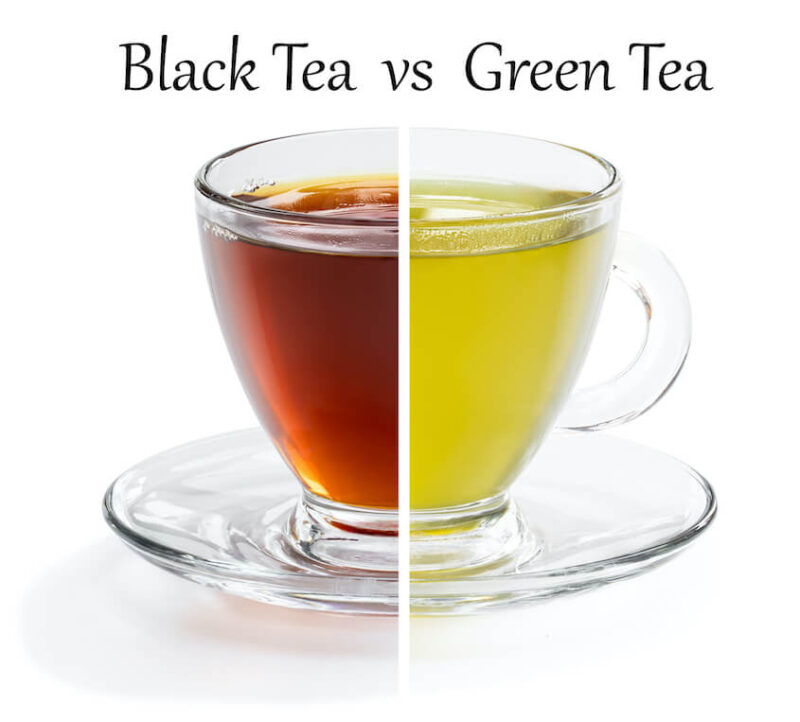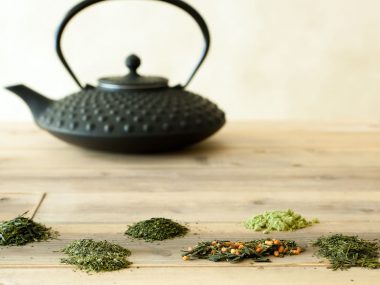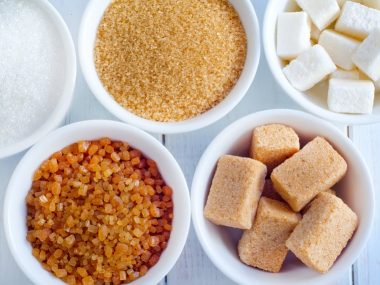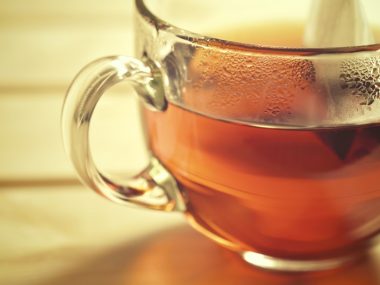Did you know that many people choose teas based on their color alone? Perceptions on which color is better leads tea drinkers to missing out on something very important. Curious to find out what you may be missing out on by blindly comparing black tea vs green tea?
Table of Contents
What Is The Difference Between White, Green, and Black Tea?
True teas produced from Camellia sinensis (tea plant) are classified into 5 categories (types of tea.):
- Black
- Green
- Oolong
- Yellow
- White.
Note: Tisanes (herbal teas) are not a true tea and fall within their own category (tisanes.)
The five true teas have unique taste and brewing peculiarities. You are probably wondering how five teas from one plant differ. Well, each of these teas is processed differently, and it’s the manner in which it’s processed that sets them apart from one another.
Processing: The Key To Making Green and Black Teas Different
Tea leaves have a significant amount of water. Within the leaves are also compounds. During processing, the leaves’ water and compounds go through changes responsible for the development of flavors and characteristics of each tea.
According to the Food Science & Food Reviews study (Chemistry and Biological Activities of Processed Camellia sinensis Teas: A Comprehensive Review,) green and black teas differ in numerous ways. Once the tea leaves are harvested and brought back to the processing plant, each goes through strategic steps in processing to produce a tea that is unique in flavor, appearance, and benefits.
Terms used in tea processing:
- Kill green = oxidation is stopped by apply heat
- Pan = kill green is done by pan-frying the tea
- Steam = kill green is done by steaming the tea
- Oxidation = fermentation of the tea
- Catechin = tea leaf compound (contributes to taste)
- Caffeine = tea leaf compound (contributes to taste)
- Phenols, Flavonoids = tea leaf compounds that have biological activity (health benefits)
- Tannins = tea leaf compound that is responsible for astringency
How Green Tea Is Processed
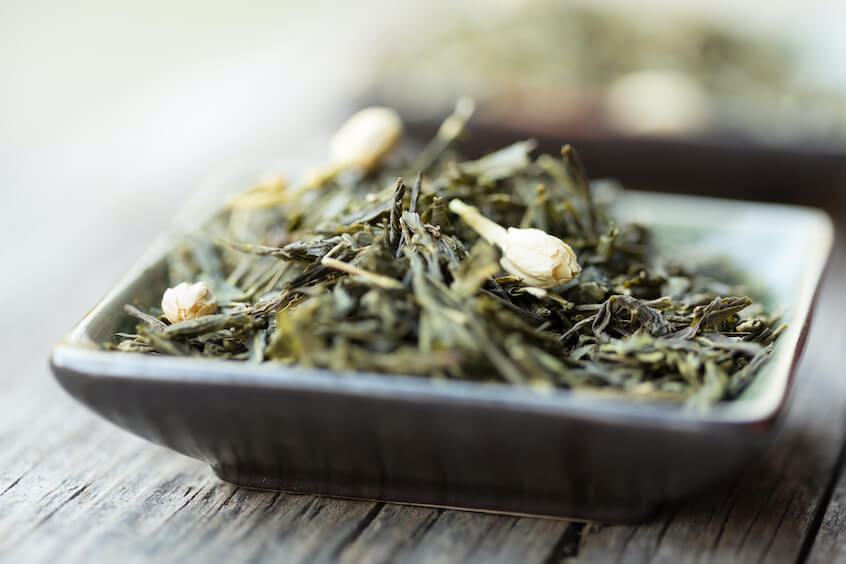
Green tea is minimally processed to produce pure tea.
Harvesting
Harvests (flushes) of green tea begin as early as April and can last up until November. Most of the world’s green tea comes from Asia, where flushes are done according to the lunisolar calendar. Other countries may also produce green teas, such as India, which follow completely different flush seasons.
Chinese Flush
- 1st Flush (Ming Quian)
- Early April
- 2nd Flush (Yu Quian)
- Middle to end of April
- 3rd Flush (Gu Yu)
- Early May
- 4th Flush (Li Xia)
- Late May
Japanese Flush
- 1st Flush (Sincha/Ichibancha)
- April to May
- 2nd Flush (Nibancha)
- June to July
- 3rd Flush (Sanbancha)
- August
- 4th Flush (Yonbancha)
- September to October
India Flush
- 1st Flush: April
- 2nd Flush: June
- 3rd Flush: August
- 4th Flush: November
At The Processing Plant
Because there are so many different types of green teas, processing may differ a bit to tailor the tea leaves to go on to become special green teas such as Hojicha, Sencha, Jasmine, etc. However, the typical steps in the general processing of green tea consist of only a few steps.
How Black Tea Is Processed
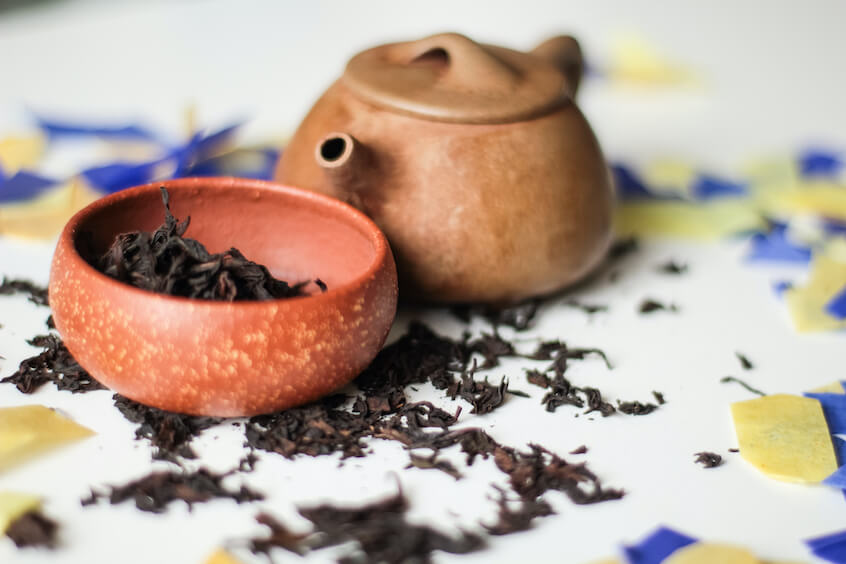
Black tea is considered “more processed” than green tea. Black teas are often blended with other black teas to create unique flavors. Most of the world’s black tea is produced in India, Africa, Sri Lanka, and other smaller regions or countries.
Harvesting
Harvests (flushes) of black tea are planned according to the season and climate. In some countries or regions, if the climate is conducive, flushes occur year-round. Black tea flushes are straightforward compared to the various flushes for green teas.
- 1st Flush: April
- 2nd Flush: June
- 3rd Flush: August (Monsoonal)
- 4th Flush: November (Autumnal)
At The Processing Plant
Black teas (like green tea) also go through more steps in processing to create specialty teas such as Assam, Keemun, Earl Grey, English Breakfast, Darjeeling, Yunnan, and many more.
Black Tea vs Green Tea: Comparison
For those unfamiliar with the different types of tea, a cup of black or green tea looks different and tastes different. The behind-the-scenes mechanics that go into the processing of that cup of tea is unknown and often go unnoticed by the average tea drinker.
A Comparison: The Differences Of Black and Green Teas
| Black | Green |
| Processing Method: More – Withering – Oxidation – Rolling – Drying | Processing Method: Less – Kill green (steam or pan) – Rolling / Shaping – Drying |
| Color: Darker | Color: Lighter |
| Flavor: Stronger | Flavor: Milder |
| Fermentation: Higher (70-100%) | Fermentation: None (2-5%) |
| Caffeine: Lower (28 mg) | Caffeine: Higher (35 mg) |
| Phenols: Lower (161 ug/mg) | Phenols: Higher (313 ug/mg) |
| Flavonoids: Lower (15 ug/mg) | Flavonoids: Higher (16 ug/mg) |
| Tannins: Lower (34 ug/mg) | Tannins: Higher (266 ug/mg) |
Black Tea Caffeine vs Green Tea
When it comes to the caffeine levels in black and green tea, there’s about 22% more caffeine in black tea than in green. In the Comprehensive Reviews of Science and Food Safety, researchers claim that black tea contains 28 mg of caffeine per cup, whereas green tea has 35 mg.
So, why does green tea contain more caffeine? The more processing a tea goes through, the less caffeine it contains. Caffeine flows through the veins of the tea leaves. Black tea, for example, goes through many more steps in processing which subject the tea leaves to more handling (through touch, machinery, heat, etc.) Caffeine begins to break down because of this.
Green tea, on the other hand, is carefully handled and subjected to very little processing. This preserves the integrity of the tea leaves, leaving more caffeine intact. This intact caffeine is passed on into a prepared cup of tea.
Is It Okay To Drink Green Or Black Tea Every Day?
We can’t recommend or advise you on the safety of consuming tea because we are not medical experts. If you are taking medications, have a health condition, pregnant, nursing, it’s best to talk to your healthcare provider before consuming copious amounts of specific tea.
Compounds in tea may have adverse health effects or interact with some medications. Those who are sensitive to caffeine can also be affected by tea. Being mindful of the amount of caffeine consumed helps prevent unpleasant side effects such as rapid heartbeat and jitters.
For those who have no conditions that limit tea consumption, you can safely enjoy about 4-6 cups of black or green tea a day.
Which Is Healthier: Green Tea Or Black Tea?
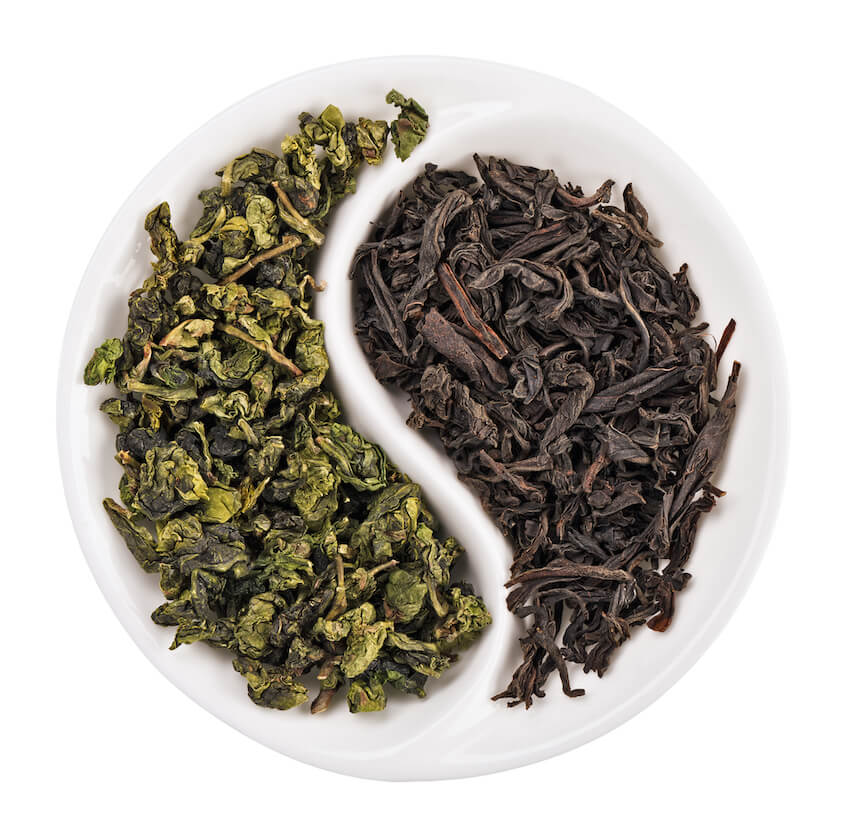
Both green and black tea have health benefits. However, green tea may surpass black tea not only in caffeine but in what it does for our body as numerous scientific studies prove.
Green Tea Benefits
In a publication of BioMed Central, a research article (Chinese Medicine Beneficial Effects of Green Tea: A Literature Review) indicates that green tea inhibits certain viruses and bacterial infections, reduces chronic diseases, helps to build up bone density, and gives the immune system a powerful boost.
Black Tea Benefits
The Current Pharmaceutical Design Journal published a research study (Tea and Health: Studies in Humans) highlighting how beneficial black tea is for healthier hearts, better metabolism, and fighting inflammatory conditions such as arthritis.
Health Benefits Of Black Tea vs Green Tea: A Comparison
Black and green teas contain compounds such as catechins, phenols, and flavonoids, which are responsible for bioactivity in our bodies. This bioactivity is what we know as a “health benefit.” Health benefits may include anti-inflammatory, antiviral, antioxidant, antibacterial, and so on.
The more processing a tea goes through; the less effective the health benefits will be. So, which tea has the highest antioxidants?
| Black Tea | Green Tea |
| Phenols: Lower (161 ug/mg) | Phenols: Higher (313 ug/mg) |
| Lower in Antioxidants | Higher in Antioxidants |
| Less Effective As: (because of phenols being converted to theaflavin) – Antibacterial – Antiviral – Antifungal – Anti-inflammatory | More Effective As: – Antibacterial – Antiviral – Antifungal – Anti-inflammatory |
Can I Mix Green Tea And Black Tea?
People have been known to mix these teas. In fact, there are teas on the market (very few) that are a blend of green and black. If you’re curious to try this combination out, we have a recipe for you that might give you a few goosebumps!
Iced Lemon Grackle
This luscious energizing tea is called “Grackle” because of the combination of green and black tea (hence “Grack–” for green+black.)
Ingredients
- 6 cups of water
- 6 slices of fresh lemon
- 3 teaspoons of loose-leaf black tea
- 3 teaspoons of loose-leaf green tea
- 1 teaspoon of honey
Directions
- Bring the water to a boil.
- Remove from the heat.
- Place loose leaf tea into a tea infuser.
- Drop the tea infuser into the hot water, cover, and steep for 5 minutes.
- Remove the cover and the tea infuser.
- Allow the tea to cool to room temperature.
- Pour the cooled tea into glasses filled with ice.
- Add a slice of lemon and enjoy!
Which Tea To Choose?
Both black and green tea are equally delicious. Although there are things that set them apart, they deserve to be appreciated, explored, and enjoyed by all.
